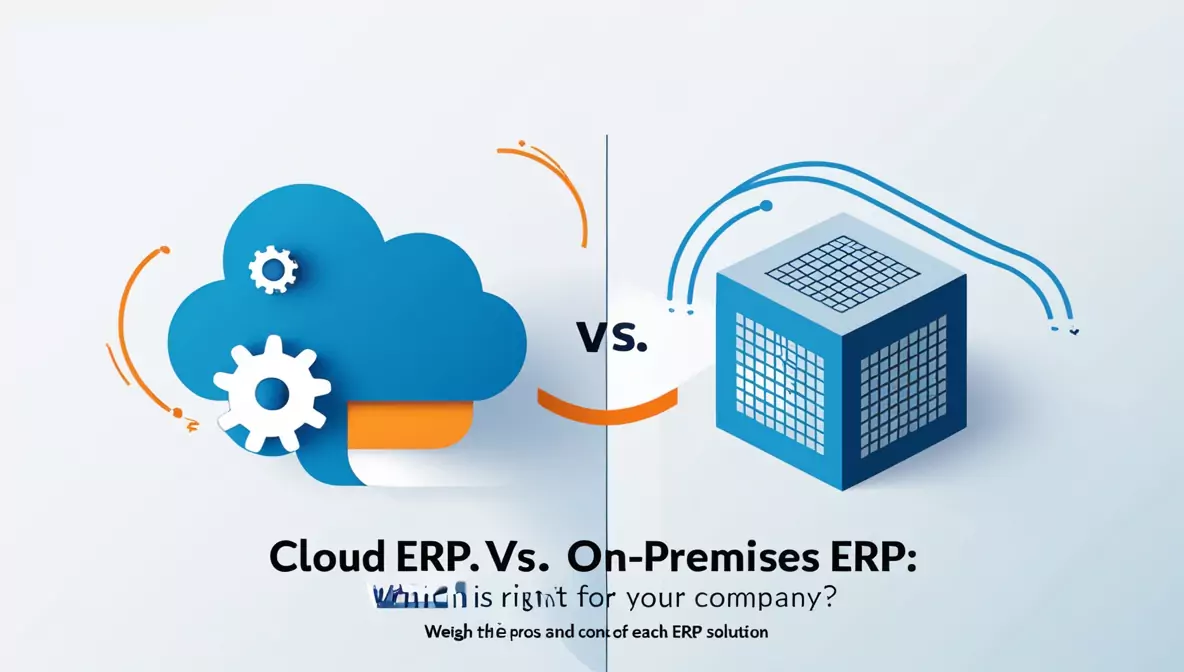In today’s fast-paced business world, enterprise resource planning (ERP) systems play a vital role in streamlining operations, enhancing productivity, and fostering growth. Choosing the right ERP system, however, is a critical decision that can significantly impact your company’s success. The debate between cloud ERP and on-premises ERP solutions is at the forefront of this decision-making process.
This comprehensive guide will explore the differences, benefits, and challenges of both ERP options, helping you determine the best fit for your business.
Understanding Cloud ERP and On-Premises ERP
Cloud ERP operates on a provider’s servers and is accessed through the internet. These systems are maintained, updated, and secured by the vendor, allowing businesses to focus on using the software rather than managing infrastructure.
On-Premises ERP, on the other hand, is installed locally on your company’s hardware and servers. This traditional model gives businesses complete control over their ERP system but requires significant IT resources for maintenance and updates.
Key Differences Between Cloud ERP and On-Premises ERP
1. Deployment
- Cloud ERP: Hosted on the vendor’s servers and delivered over the internet. No hardware is required on your end, making deployment quicker and simpler.
- On-Premises ERP: Installed and managed on your company’s physical servers, requiring a longer setup process and higher upfront investment.
2. Cost Structure
- Cloud ERP: Operates on a subscription-based model, typically involving monthly or annual fees. This includes maintenance, updates, and support.
- On-Premises ERP: Involves a significant upfront cost for software licenses and hardware, with ongoing expenses for IT staff, updates, and infrastructure.
3. Scalability
- Cloud ERP: Easily scalable to accommodate business growth. You can add users or features with minimal disruption.
- On-Premises ERP: Scaling can be expensive and time-consuming, often requiring new hardware or software licenses.
4. Maintenance and Upgrades
- Cloud ERP: The vendor handles maintenance, updates, and security patches automatically, reducing your IT burden.
- On-Premises ERP: Your team is responsible for maintenance, updates, and security, which can strain internal resources.
5. Accessibility
- Cloud ERP: Accessible from anywhere with an internet connection, making it ideal for remote work and mobile teams.
- On-Premises ERP: Access is limited to the physical location of your servers unless additional infrastructure is implemented.
6. Security
- Cloud ERP: Vendors invest heavily in robust security measures, including encryption and disaster recovery plans. However, some businesses may have concerns about data privacy.
- On-Premises ERP: Provides full control over security protocols, but the responsibility for safeguarding data lies entirely with your IT team.
Benefits of Cloud ERP
- Lower Initial Costs: The subscription model eliminates the need for large upfront investments.
- Faster Implementation: Deployment is quicker compared to on-premises solutions.
- Flexibility: Perfect for companies with remote teams or employees needing access on the go.
- Automatic Updates: Always stay up-to-date with the latest features and security enhancements.
- Scalable: Easily adjust resources to match your business needs.
Benefits of On-Premises ERP
- Full Control: Retain complete ownership of your data and system configuration.
- Customization: Offers more extensive customization options to fit unique business processes.
- Offline Access: Doesn’t rely on internet connectivity, ensuring availability even during outages.
- Long-Term Cost Efficiency: While initial costs are high, it can be more economical in the long run for large enterprises.
Challenges of Cloud ERP
- Ongoing Costs: Subscription fees can add up over time.
- Data Privacy Concerns: Relinquishing control of sensitive data to a third party can be unsettling for some businesses.
- Internet Dependency: Performance relies on stable and fast internet connectivity.
Challenges of On-Premises ERP
- High Upfront Costs: Requires significant investment in hardware, software, and IT resources.
- Complex Maintenance: Managing updates, security, and troubleshooting can overwhelm internal teams.
- Limited Scalability: Expanding requires additional investments and effort.
Factors to Consider When Choosing Between Cloud ERP and On-Premises ERP
1. Business Size and Budget
- Small to medium-sized businesses may prefer cloud ERP for its lower initial costs.
- Larger enterprises with robust IT infrastructure might find on-premises ERP more cost-effective over time.
2. Industry Requirements
- Industries with strict data security regulations may lean toward on-premises ERP for greater control.
- Businesses requiring frequent updates and scalability often choose cloud ERP.
3. IT Resources
- Limited IT resources favor cloud ERP since the vendor handles most technical tasks.
- Companies with dedicated IT teams can manage on-premises ERP effectively.
4. Growth Plans
- Cloud ERP suits rapidly growing businesses due to its scalability.
- Stable, established organizations may benefit from the long-term stability of on-premises ERP.
Conclusion: Which ERP Solution Is Right for Your Business?
Deciding between cloud ERP and on-premises ERP depends on your company’s unique needs, goals, and resources. If you prioritize scalability, remote access, and lower initial costs, cloud ERP is an excellent choice. However, if your business values control, customization, and long-term cost efficiency, on-premises ERP might be the better option.
Take the time to assess your business requirements, consult stakeholders, and evaluate potential vendors. The right ERP solution can transform your operations and position your company for sustained success.
By understanding the differences and benefits of each system, you can make an informed decision that aligns with your strategic goals.
